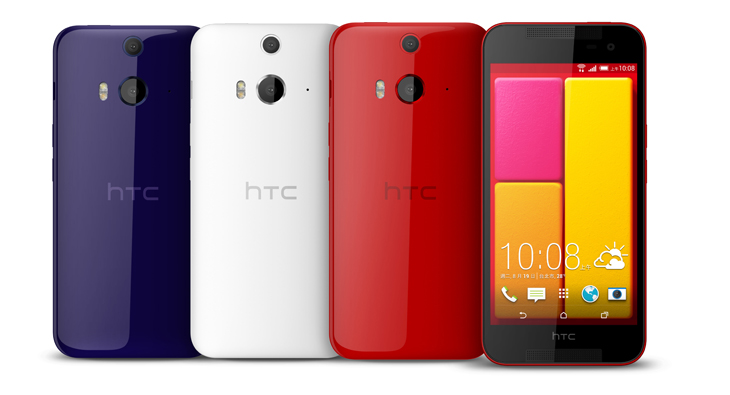HTC Hopes To Conquer Asia With New Butterfly 2 Flagship And Its 13MP Dual-Cameras
Today, HTC announced its latest flagship device targeting the Asian market: the new Butterfly 2. While the phone has much in common with its western brother, the M8, it lacks some of the M8’s most recognizable characteristics such as the metallic case and the 4MP “UltraPixel” camera (which is a trend we're seeing on some of HTC’s other recent phones, too).
The Butterfly 2 has a plastic body, and it comes with a 5” 1080p display, 2.5 GHz Qualcomm Snapdragon 801 processor, 2GB of RAM, 16GB/32GB storage options, microSD with support for up to 128GB of external storage, dual “BoomSound” front-speakers with JBL headphones, a pair of 13MP dual-cameras on the back (to create the “Duo Effect”) and a front-facing 5MP selfie camera.
The “UltraPixel” camera has been criticized a great deal for its low resolution and details despite its superior performance in low-light, but I believe HTC has misunderstood that criticism and thought the customers want them to get rid of the UltraPixel camera completely rather than simply upgrade it.
The biggest issue with the UltraPixel camera this year has been that it stayed at the same resolution as last year’s HTC One (M7). If HTC would have used a larger sensor, like Samsung’s 1/2.5” sensor (Galaxy S5) or Sony’s 1/2.3” sensor (Xperia Z1/Z2) but with an 8MP resolution rather than 16-20MP, I don’t think there would’ve been nearly as much criticism, if any at all.
With a bigger sensor, HTC could have had the larger “UltraPixels” that can capture more light, and therefore perform better in low-light conditions, while still getting a reasonable amount of details for today’s smartphones with an 8MP resolution.
Perhaps it was a cost decision between the above and including the second camera for the “Duo Effect” on the M8. However, that doesn’t explain how they were able to put dual-13MP main cameras on the back of the Butterfly 2 this time around, unless it wasn’t a cost decision at all, just something HTC missed or didn’t want to do.
The M8 camera was also missing the OIS (Optical Image Stabilization), which helps with capturing blur-free images. OIS tends to increase the cost of a smartphone camera significantly, and HTC would probably have needed it for both of its rear cameras if they were to sync properly, so we can see how that could have been a pure cost-based decision. That’s why we’re not seeing OIS in the new Butterfly 2, either, which also comes with a pair of cameras on the back.
Get Tom's Hardware's best news and in-depth reviews, straight to your inbox.
HTC plans to sell the "Butterfly 2" under that name in most of Asia (Taiwan, Hong Kong, India, Malaysia, Singapore and Thailand) starting September 2nd, but it seems it’s going to keep the "J Butterfly" name for Japan, where the HTC J and the previous HTC J Butterfly became the best-selling phones on the KDDI network.
Follow us @tomshardware, on Facebook and on Google+.
Lucian Armasu is a Contributing Writer for Tom's Hardware US. He covers software news and the issues surrounding privacy and security.
-
ayushde Any idea about the price?Reply
Other than the duo camera, and the phone is not much different from the E8.
It'd be interesting to see how much extra HTC charges for the Butterfly only for the duo which I feel is nothing more than a gimmick. -
EasyLover They have also earlier launched HTC One E8 which has all the functionality of HTC One M8 but it comes in plastic back cover and 13MP Cam unlike ultrapixel of M8. Strange move by HTC on Butterfly 2 and HTC One E8!Reply -
EasyLover They have also earlier launched HTC One E8 which has all the functionality of HTC One M8 but it comes in plastic back cover and 13MP Cam unlike ultrapixel of M8. Strange move by HTC on Butterfly 2 and HTC One E8!Reply

